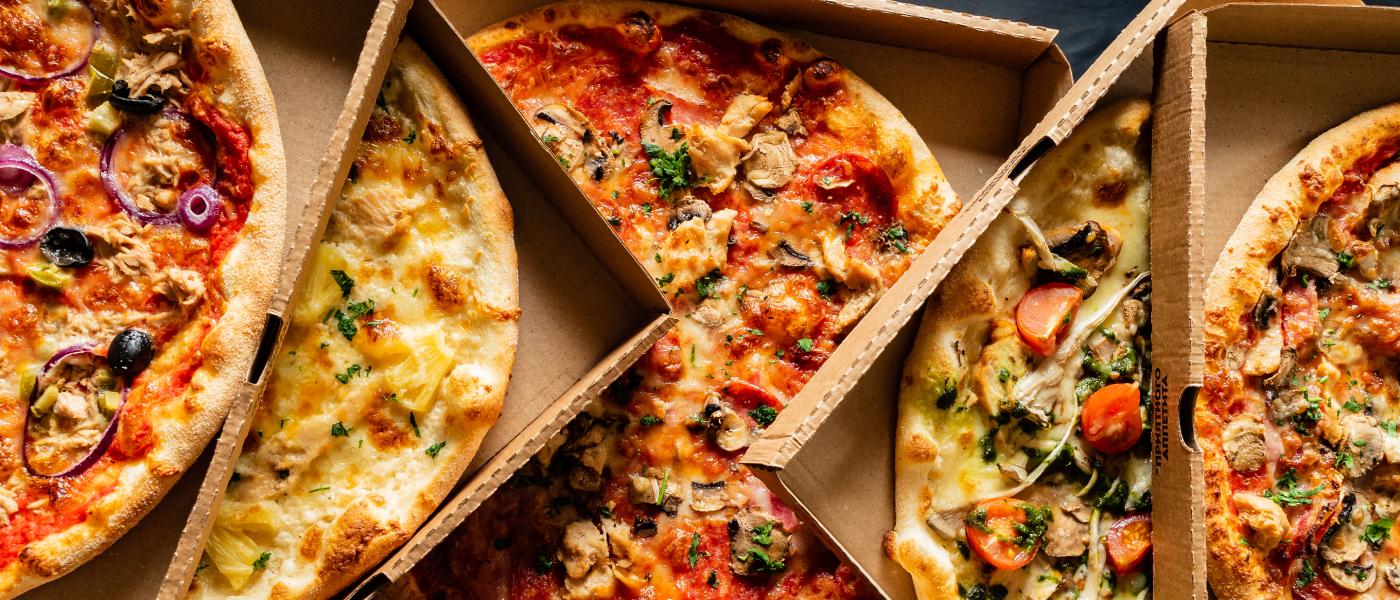Have you ever been curious about the history of the pizza box and how we progressed with food delivery?
There’s a universal love that binds us all, and it’s called pizza. But have you ever wondered about the humble box that delivers this cheesy delight? Let’s unwrap the fascinating history of the iconic pizza box and explore how it evolved to become an integral part of our pizza experience.
Pizza is a staple in homes worldwide, transcending cultures and borders. From New York’s bustling streets to Italy’s charming alleyways, pizza brings joy to millions on a global scale. But while we savor the taste, we often overlook the piece of packaging that makes it possible—the pizza box.
The Early Days of Pizza Packaging
The first pizza deliveries didn’t come in the cardboard boxes we know today. In the early days of pizza delivery, pizzas were transported using simple paper bags or metal containers. These methods were far from perfect and often meant soggy pizzas. But necessity is the mother of invention, and soon, pizza makers began to look for better solutions.
The earliest recorded instance of a pizza box dates back to the 1800s in Naples, Italy. Bakers would use stufatelli—small metal containers—to keep pizzas warm during transport. These were effective but impractical for mass deliveries. It wasn’t until the mid-1900s that pizza boxes began to resemble the ones we use today and set the stage for future innovations.
Evolution of the Box Over Time
The pizza box has undergone significant changes since its inception. The first cardboard pizza boxes were simple—rectangular containers designed to keep pizzas warm. However, they tended to become greasy and collapse under the weight of the pizza.
In the 1960s, Tom Monaghan, founder of Domino’s Pizza, sought to improve pizza packaging. He introduced corrugated cardboard—sturdier and better at retaining heat. This innovation revolutionized the pizza delivery industry and made it possible to transport pizzas more efficiently and over longer distances.
The Environmental Challenge
While pizza boxes have come a long way, they also pose an environmental challenge. Traditional pizza boxes are not easily recyclable due to food contamination and grease. However, recent pizza box packaging trends aim to tackle this issue.
Some companies are experimenting with compostable materials and biodegradable coatings, which reduce the environmental impact of pizza boxes. Other companies are exploring innovative designs that minimize waste, such as foldable boxes or repurposed storage containers. These efforts reflect a growing awareness of sustainability in the food delivery industry.
A Slice of Innovation
Brooklyn pizza spots are doing things differently when it comes to pizza packaging. Known for their creativity and dedication to quality, these pizzerias are at the forefront of innovative pizza box designs. Some Brooklyn pizzerias use recyclable containers, which encourages customers to return them for a discount on their next order.
Other pizzerias have adopted eco-friendly materials, such as recycled cardboard and plant-based inks. These initiatives reduce waste and enhance the overall dining experience.
Conclusion
And there you have it—the brief but fascinating history of the iconic pizza box. If you’re a pizza enthusiast who has ever been curious about pizza and pizza delivery, hopefully, this blog highlighted something unique about this service. The next time you receive a pizza delivery, consider paying a small tribute to that specialized box while you enjoy a slice of deliciousness.


